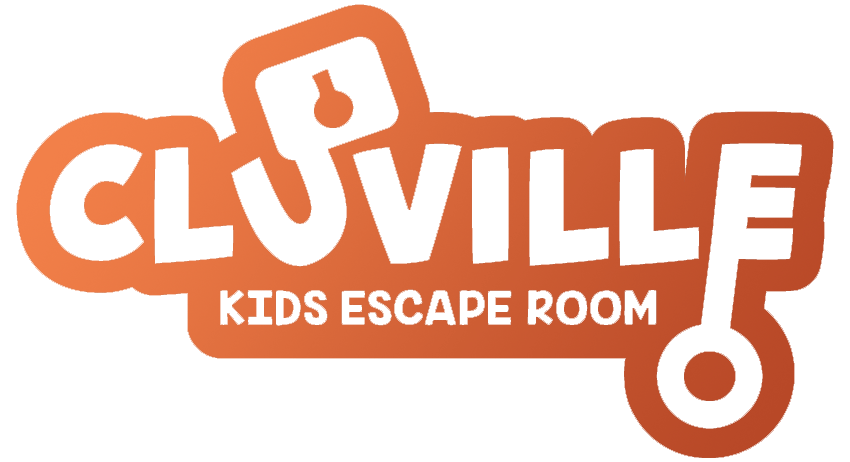Spring 2025 Field Trips are FULL – Please book in Fall 2025.
Groups of 30 or less are still encouraged to book for few remaining spots in May.
Field Trips
Butterfly Wonderland is a unique, educational experience for any school group. There is so much to learn about nature that will fit in school lesson plans including the lifecycle of butterflies, desert inhabitants, spineless giants, bees, colorful fish of the Amazon and so much more!
Imagine wandering through a rainforest landscape with running waterfalls, exotic plants and flowers in bloom, and serene koi fish ponds while surrounded by thousands of the most beautiful species of butterflies in the world fluttering all around you.
Before entering the Butterfly Conservatory, students will also enjoy a specially-edited version of the 3D film “Flight of the Butterflies” in our state-of-the-art Theater and then stop at the Chrysalis Emergence Lab. After a visit to the Butterfly Conservatory where students can also visit our Honey Bee Exhibit, students will visit the Spineless Giants exhibit, and then the Rainforest Reptiles and Tropical Waters exhibit before exiting through the Butterfly Treasures gift shop.
Reserve your field trip at least two weeks in advance. If you have any questions or concerns, please contact our Education Department at (480) 800-3000, ext. 206. Your reservation is not final until you receive confirmation. Additional information will be sent to you in a confirmation email. If your school is a Title One, please see below to apply for a scholarship.
Click here for a complete list of field trip prices for each attraction at Arizona Boardwalk, including optional upgrades.
TITLE 1 SCHOLARSHIP
Butterfly Wonderland Foundation is pleased to provide opportunities for Arizona Title 1 school classrooms to experience a unique and immersive day of education at Butterfly Wonderland.
Application Process
Butterfly Wonderland Foundation receives multiple requests for Title 1 Scholarships every year. There are limited scholarships and application does not guarantee an award. If your class is selected, you will be sent an award letter by email. We use the following criteria and eligibility guidelines in making our award decisions.
Scholarship Criteria & Eligibility
• Title 1 School designation from Arizona Department of Education
• At least 50% of the students eligible for the Free or Reduced Lunch Program
• Scholarships are limited to one award per school, per school year.
Field Trip Forms and Curriculum
Field Trip Info Sheet
- Where to Start
- Contact Info
Field Trip Checklist
- Terms & Conditions
- Must have signed copy for day of trip!
Field Trip Handout
- Chaperone Guidelines
- Student Behavior
- Timeline
Sample Quote & FAQ
- Frequently Asked Questions
Bus Parking
Student Lunch Order Form
- Lunch Options
Outreach Reservation
- Outreach Reservation
Interpreting the Standards
- Arizona State Science Standards
- Next Generation Science Standards
- Arizona Common Core Standards – English Language Arts
Using the Standards
- Arizona State Science Standards
- Next Generation Science Standards (Released April 2013)
- Arizona Common Core Standards – English Language Arts (September 2012)
- Lesson Design for Butterfly Wonderland (July 2013)
Flight of the Butterflies Educator Guide
- Welcome to the Fascinating World of the Monarch Butterfly!
Curriculum Team
- Meet the Curriculum Design Team
Rainforest Reptile Curriculum Contents
Butterfly, Butterfly, Butterfly
Content: Butterflies and Life Cycle
- Students will demonstrate knowledge regarding the basic characteristics of a butterfly.
- Students will demonstrate a basic knowledge of the life cycle of a butterfly.
Honeybees
Content: Honey Bees
- Students will be able to identify the three body parts of a honeybee, understand the importance of bees in the environment and express a general knowledge of the lifecycle and characteristics of bees.
Is That a Bug?
Content: Desert Insects
- Students will demonstrate an understanding of the basic characteristics of an insect. Students will be able to identify some insects that exist in the local desert environment.
Fish N’ Fun
Content: Fish
- Students will identify the characteristics of fish and the general environment in which they live.
What’s In The Rainforest?
Extra Lesson: Amazon Rainforest Life
- Students will be able to identify plants and animals in the Amazon Rainforest environment and understand their relationship to one another.
Rainforest Reptiles Run, crawl, swim and climb Pre K-K
Rainforest Reptiles Who Lives in the Rainforest Pre K-K
Beautiful Butterflies
Content: Butterflies and Life Cycle
- Students will demonstrate knowledge of the basic anatomy and function of the butterfly.
- Students will demonstrate knowledge of the habitat of butterflies and moths.
- Students will be able to label and explain the life cycle of the butterfly.
A Bee’s Life
Content: Honey Bees and Life Cycle
- Students will identify the form and function of a honeybee, understand the importance of bees in the environment and express a general knowledge of the life-cycle and behaviors of bees.
- Students will demonstrate an understanding of the contributions honeybees make to the environment.
Insect, Who Lives in the Desert?
Content: Desert Insects and arachnids
- Students will demonstrate an understanding of the characteristics of living things, their structure, function and life cycle. Students will identify some insects/spiders that exist in the local environment.
The Amazing Amazon 1-2
Content: Amazon Rainforest
- Students will demonstrate an understanding of how animals and plants in a habitat are interdependent. Students will demonstrate knowledge of animals in the Amazon Rainforest and their structure and function.
Rainforest Reptiles What are you, a reptile or amphibian 1-2
Rainforest Reptiles Who’s hiding in the Rainforest 1-2
Chrysalis, Caterpillar, and Butterfly
Content: Butterflies and Life Cycle
- Students will demonstrate knowledge regarding the physical and behavioral characteristics of the butterfly.
- Students will describe the manner in which butterflies modify their behavior in a new habitat.
- Students will analyze the anatomical similarities and differences between butterflies and other insects.
The Amazon, a Tropical Rainforest
Content: Amazon Rainforest Life
- Students will demonstrate an understanding of relationships among various organisms in an ecosystem.
- Students will demonstrate a general knowledge of the plant cycle as it relates to the decomposition of matter on the rainforest floor.
- Students will demonstrate an understanding of conservation and the interactions between human populations, natural resources, and the environment.
The Amazon River Experience
Content: Fish and Stingrays – Amazon River
- The students will demonstrate an understanding of the location and impact of the Amazon River and the surrounding environment.
- The students will evaluate environmental occurrences along the Amazon River and possible solutions to protecting the wildlife of the region.
- Students will be able to identify several species of aquatic life in the Amazon River.
Desert Creatures
Content: Desert Insects and Arachnids
- Students will demonstrate an understanding of the characteristics of specific living things, their structure, function and life cycle. Students will identify how specific desert creatures exist and impact their environment.
Rainforest Reptiles A Walk throughout the Rainforest 3-5
Rainforest Reptiles Lizards, snakes and frogs, oh my! 3-5
The Magic Chrysalis
Content: Butterflies, Moths and Life Cycle
- Students will demonstrate knowledge regarding the physical and behavioral characteristics of the butterfly as they relate to form and function.
- Students will understand the ability that butterflies have to maintain survival in the environment.
The Living Desert 6-8
Content: Desert Insects and Arachnids
- Students will demonstrate an understanding of the characteristics of specific living organisms in the environment and how their structure and function contribute to survival. Students will describe how specific desert creatures adapt to and impact the local ecosystem by using observation, prediction, and application.
Amazon Aquatic Life
Content: Fish and Stingrays – Amazon River
- The students will demonstrate an understanding of the interactions between populations or species and their natural habitat.
- The students will evaluate the environmental benefits of the biological organisms in an ecosystem.
- Students will compare and contrast the interdependent and competitive relationships in organisms within an ecosystem.
The Balance of Nature
Content: Desert Ecosystem
- Students will demonstrate an understanding of the characteristics of specific living organisms in the environment and how their structure and function contribute to survival. Students will describe how specific desert creatures adapt to and impact the local ecosystem by using observation, prediction, and application.
Honeybees
Content: Honey Bees and Life Cycle
- Students will understand the characteristics of honeybees and the relationship to the environment.
- Students will be able to identify the parts of the bee, life cycle, and organization of the bee colony.
A Walk Through the Rainforest
Extra Lesson: Rainforest Layers and Ecosystem.
- Students will demonstrate an understanding of relationships among various organisms in an ecosystem.
- Students will demonstrate a general knowledge of the structure and function of plants in a rainforest ecosystem.
- Students will demonstrate an understanding of the potential risks in climate changes related to the rainforest and determine possible solutions.
Rainforest Reptiles Rainforest Life 6-8
Rainforest Reptiles Reptiles and Amphibians 6-8
The Mystery of Butterflies
Content: Butterflies, Sustainable Farming, and Atrium
- Students will demonstrate knowledge regarding the physical and behavioral characteristics of the butterfly as it relates to biodiversity and the natural environment.
- Students will understand sustainable farming and the relationship to butterfly farming.
- Students will be able to compare and contrast butterflies and moths.
The Amazon Rainforest Experience
Content: Amazon Rainforest and Conservation
- Students will demonstrate an understanding of the interdependence of organisms with the environment.
- Students will demonstrate a general knowledge of energy flow in an ecosystem.
- Students will demonstrate an understanding of conservation, urban development, populations, climate change and natural resources in the rainforest environment.








